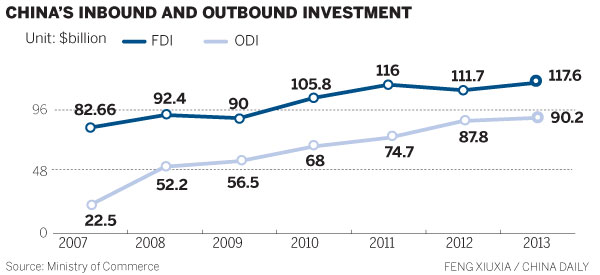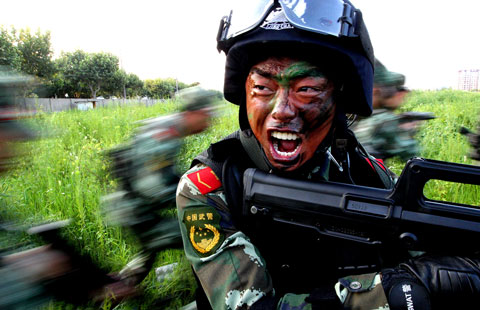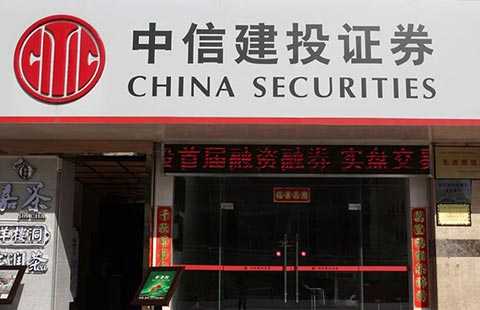
Nation’s ODI will soon move ahead of FDI, ministry says
China is moving nearer to a long-pursued goal of achieving balanced capital flows, with a commerce official saying its outbound direct investment will soon surpass foreign direct investment to the country.
Meanwhile, the government is looking at the timing for scrapping limits on foreign investment and opening up more sectors following comprehensive reform plans outlined at a high-level economic meeting late last year.
“Maybe this year, or in two years, China’s outbound direct investment will exceed its FDI,” Commerce Ministry spokesman Shen Danyang said at a news briefing on Thursday.
Last year, China’s ODI trailed FDI inflows by more than $20 billion, the ministry said.

ODI and FDI don’t include investment in the financial sectors.
Shen said achieving balanced capital flows will be good for the whole world as well as for China’s commercial cooperation with other economies.
FDI rose by 5.25 percent year-on-year to $117.59 billion last year, while ODI increased by 16.8 percent to $90.17 billion, both growth rates being better than the global average, Shen said.
China was the world’s second-largest recipient of global FDI and third-largest investor in 2012.
Zhang Jianping, a researcher at the Institute for International Economic Research at the National Development and Reform Commission, said China’s capital account will become balanced as its ODI matches FDI.
This will also help to reduce inflationary pressure from the huge trade surplus as well as difficulties in macroeconomic control, Zhang said.
Relocating domestic manufacturing plants to overseas markets will also help to avoid trade investigations launched against Chinese companies, Zhang said.
Shen, the ministry spokesman, said that in 2013 China may have been targeted by the most anti-dumping investigations in the world for 18 consecutive years. It may have also faced the most anti-subsidy investigations for eight consecutive years last year.
Wang Jun, an expert at the China Center for International Economic Exchanges, a government think tank, said that boosting overseas investment, including that by individual investors, is an important strategy for China.
“Overseas investment will extend the use of the yuan and make it a settlement currency in regional and even international trade and investment, which will enhance China’s national strength,” Wang said.
Shen said the country’s ODI will continue to boom in 2014 as the government cuts approval procedures and gives more support.
Inward investment
FDI will be stable this year as the global economy is recovering and the leadership’s reform measures have started to boost domestic demand and improve the investment environment, Shen said.
“The ministry will step up reforms of the FDI management system this year. We will study specific timetables for scrapping controls or relaxing restrictions in some sectors.”
The service sector will be a priority, he said.
“We will ... figure out the key problems in opening up 10 service sectors and general manufacturing industry, including easing stake-holding limits and registered capital thresholds and expanding the business scope for foreign investment,” Shen said.
China has pledged to widen investment access and open up some service areas including finance, education and culture while removing restrictions on foreign investment in service areas including pensions, architectural design and e-commerce.
China remains the world’s top investment destination with its comprehensive advantages including a huge market, large talent pool and sound industrial facilities.
FDI into service sectors rose by 14.15 percent to $61.45 billion last year, accounting for 52.3 percent of the total, the first time service sectors have attracted more than half of the investment.
Zhang, the researcher from the National Development and Reform Commission, said, “It shows the country’s FDI structure is improving along with the government’s restructuring of the economic growth pattern to enhance the contribution of service sectors.”








